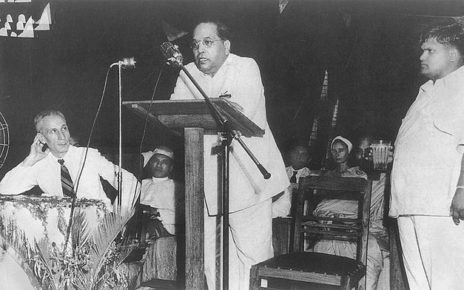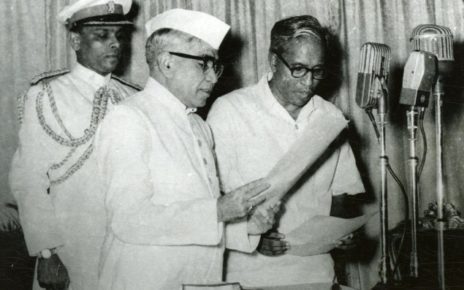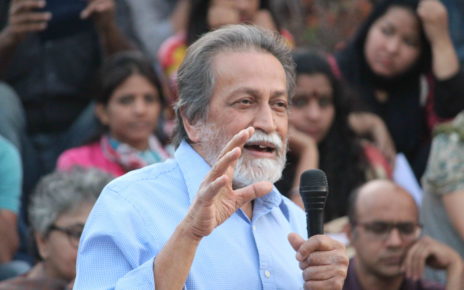(Originally published in The Times of India, August 1, 2010.)
Four years ago, Surekha Bhotmange, a dalit woman farmer living in the village of Khairlanji in Maharashtra was brutally killed along with her two sons, Roshan, the visually handicapped Sudhir and her 18-year-old daughter Priyanka. Her husband Bhaiyyalal Bhotmange escaped. The method of killing was brutal. Each was hunted down and beaten to death by a mob of men belonging to the dominant caste in the village.
Recently, the Nagpur bench of the Mumbai High Court gave its judgment in the case. It held that caste had nothing to do with the killings. It agreed with the judgment of the sessions court on the non-applicability of the Scheduled Castes and Scheduled Tribes (Prevention of Atrocities Act) (POA). As a consequence, it reduced the sentence from death to 25 years imprisonment. If there were ever a case where the POA was applicable, it is Khairlanji. But the caste hatred angle was played down from the initial, flawed investigations, to the arguments of the prosecution, including those of state prosecutor Ujjwal Nikam (now made famous by the Ajmal Kasab case) and finally the interpretations in the present judgment.
The evidence, however, is unambiguous. The Bhotmange family, one of only three dalit families in the village, was forcibly prevented from building a pucca house. They were told that dalits could not do so. Even though the family owned five acres of land, the village authorities refused to levy tax as they wanted to take over the land and deny proof of occupation. The family was constantly harassed but refused to accept the supremacy of the dominant castes.
Surekha used to go for help to a fellow dalit, Siddharth Ghajbiye, a police patil in a neighbouring village. On September 3, 2006, angered by his help to Surekha, a group in Khairlanji beat up Ghajbiye. He was rescued by Surekha and Priyanka, who were witnesses in the case against the attackers. On September 29, 2006, the men involved were arrested but immediately released on bail. Acting in concert, they returned to the village and, in broad daylight, brutally killed Surekha and her three children. Their mutilated bodies were found later.
The judgment took a very narrow view of the motive of revenge, failing to appreciate that the dimensions of revenge against dalits are quite different from other cases, given the caste-ridden nature of our society. The judgment states: “In the present case, the whole object of the accused was to take revenge against Surekha and Priyanka because the accused believed they were falsely implicated in the assault of Siddharth Gajbhiye by them and, in the process, committed not only the murders of Surekha and Priyanka but of Sudhir and Roshan. Therefore, it is difficult to hold that the accused intended to insult Surekha (on basis of caste) or the other deceased admittedly belonging to the scheduled caste.”
By separating the motive of revenge from the caste angle, the women by their actions, so to say, become responsible for their own killing. What prevented the judges from holding that the motive of revenge was precisely because two dalit women refused to be bullied and gave witness truthfully? The judges did not take into account that among the convicted are those who had nothing to do with the case of assault on Ghajbiye. What would their motive be, except that of caste?
Common sense tells us that it is most unlikely that murder can be committed only because two women stood witness in a bailable offence in a minor case of beating. But the judges found that myth easier to believe than the caste motive. If the Bhotmanges had belonged to another caste, it is probable that others of the same community would have intervened and found a solution. It is precisely because the Bhotmanges were dalits and in a minority in the village, refusing to be subordinate to others, that such brutal reprisals were carried out.
The most unfortunate aspect is that on the basis of this erroneous interpretation, the judgment absolves the accused of any crime of a sexual nature against the dalit women. In dealing with a case of police manhandling of women demonstrators, the Supreme Court issued guidelines that only policewomen should be deployed. It was felt by the apex court that if male police handle women demonstrators, there is likely to be sexual misconduct. For similar reasons, in cases of arrest, a male policeman is prohibited from touching a woman. If an enraged mob of men is manhandling a woman, holding her, dragging her, beating her, stripping off her sari, as was done with Surekha, can there be any doubt that she would be sexually abused?
Priyanka’s body was found stripped of all her clothes. The dreadful photographs show that there was not an inch of this young woman’s body that was not marked by bruises. The judgment mentions that six of the accused “removed clothes of Priyanka before disposing of her severely injured dead body and thereby wanted to get satisfaction to their sexual eyes at such extreme circumstances.” Yet, the judgment in an outrageous conclusion holds that since revenge is the motive, there was no intention on the part of the accused to insult the deceased or to “dishonour or outrage (their) modesty.”
If the court was against capital punishment in principle, it could have said so, in so many words. But to advance the kind of arguments that it has is to obliterate the reality of caste violence and to reduce the sentence is to insult the memory of the victims and set a precedent which has grave implications for others seeking justice under the Scheduled Castes and Scheduled Tribes (Prevention of Atrocities) Act.
If Khairlanji was a shame and disgrace to our nation and our Constitution, the judgment adds another chapter to it.


